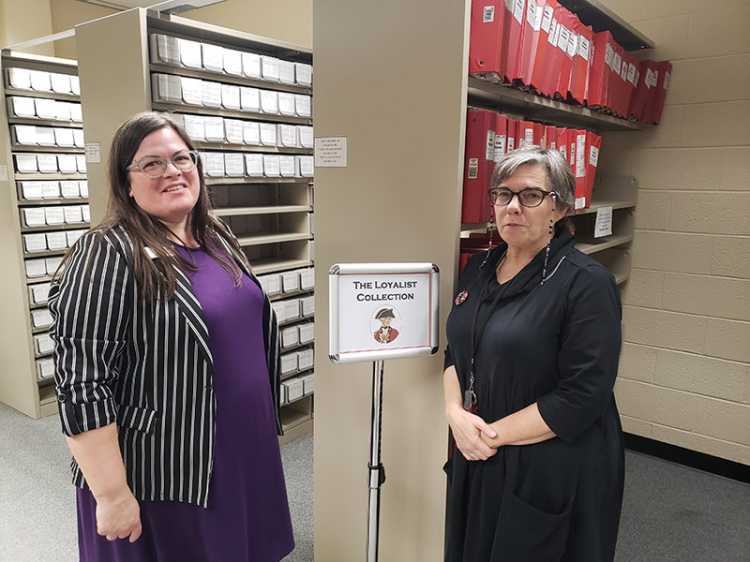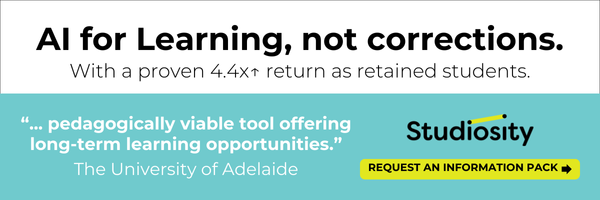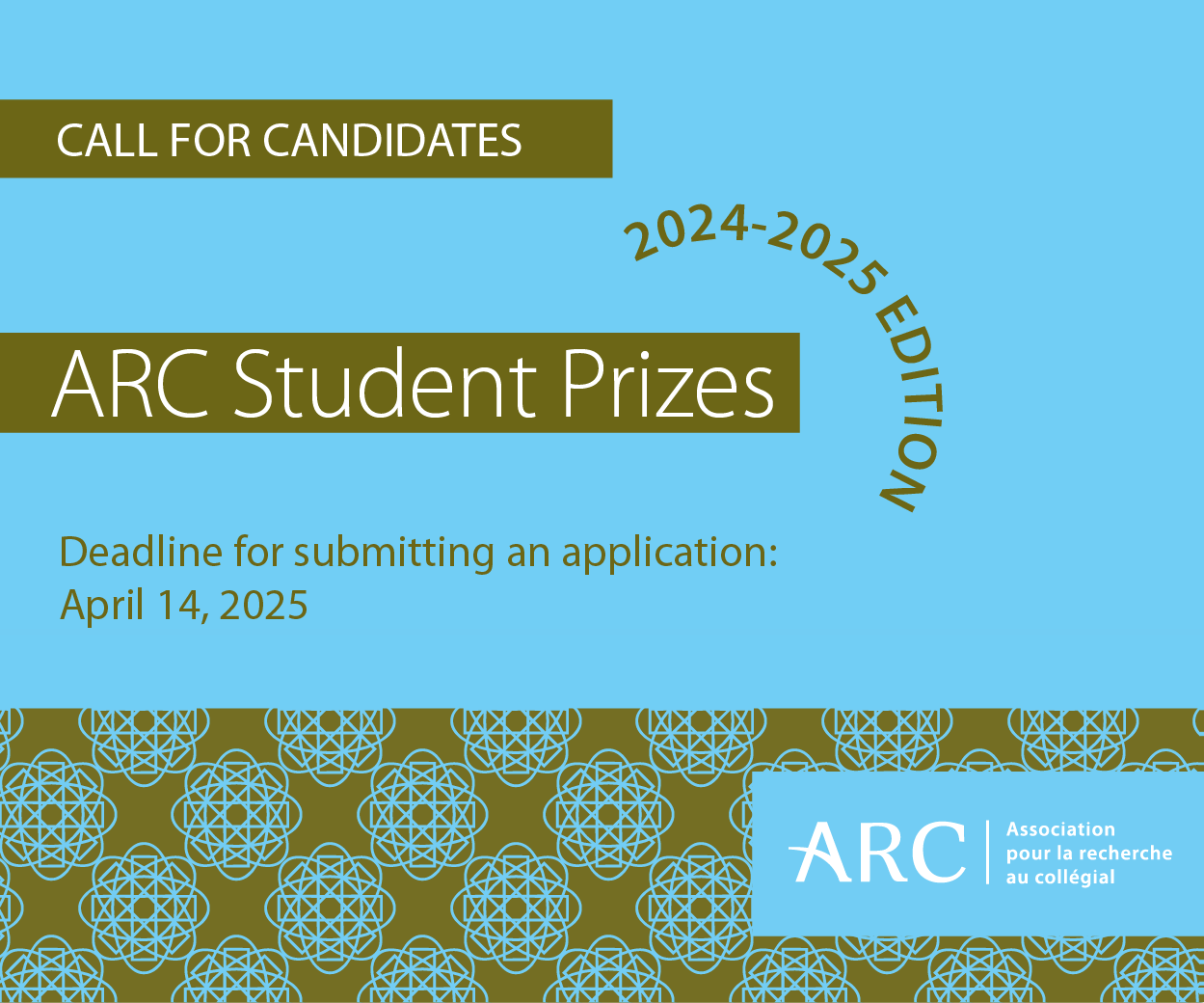Tucked away in the Harriet Irving Library (HIL) at the University of New Brunswick's (UNB) Fredericton campus is a treasure of historical documents, rare books and one-of-a-kind artifacts that tell the story of this province and beyond.
"We have over 25 special book collections, including rare books dating back to 1496, as well as archives and manuscripts that cover everything from the American Revolution to the literary works of New Brunswick authors," said Christine Lovelace, head, archives & special collections.

Leah Grandy, special collections assistant, and Christine Lovelace, head, archives & special collections, stand by the Loyalist Collection at the Harriet Irving Library on UNB's Fredericton campus.
Lovelace and her colleague, Leah Grandy, special collections assistant, are two of the keepers of this history, guiding researchers, students and curious members of the public through the collection of microforms (small, space-saving versions of printed materials that can be viewed using special machines that magnify content) as well as carefully preserved documents and books.
The microform collection is split between the HIL's basement and fifth floor. The basement is where the extensive newspaper microfilm collection is stored. Appointments are not required to access this collection during regular library hours, but if staff assistance is required, researchers should book an appointment by emailing mic@unb.ca.
"That way, we can make sure we have what you need, and sometimes we can make recommendations on the best things to look at," said Grandy.
"Anybody can make an appointment," Grandy said. "You don't even have to be a member of the UNB community."
Microform readers are available, allowing researchers to save page images digitally.
The Loyalist Collection is the most extensive collection in North America of primary sources centred on Loyalists of the American Revolution. It is mainly on microform, although the HIL possesses original rare manuscripts such as the Winslow Papers and the Saunders Papers.
"We have researchers from all over the world accessing these materials," said Grandy.
From the original 1785 petition addressed by prominent Loyalists to Gov. Thomas Carleton seeking to establish what would become UNB to the personal papers of Prime Minister R.B. Bennett, the archives hold a wealth of irreplaceable history. They even have books from Lord Beaverbrook's library.
"We're also committed to collecting the papers of New Brunswick authors people like Alden Nowlan, Sheree Fitch and Brian Bartlett. Some of their correspondence, manuscripts and other materials are part of our literary papers collection," Lovelace said.
The HIL has a collection it calls "New Brunswickana," consisting of preservation copies of books by New Brunswick authors. While some of these titles may be found on the regular stacks, the copies held in the special collections do not circulate.
"Copies in the stacks get taken home by students, who may eat on top of them or whatever. But our copies don't circulate. In 100 years, this might be the only copy of that book."
Documents and books can be viewed in the research room on the fifth floor during operational hours, ideally with an appointment made by emailing archives@unb.ca to ensure the availability of materials and staffing.
Appointments are required to view archival manuscripts as many are stored off-site and may take 24 to 48 hours to retrieve.
Archives are not just a repository for the past but also a vital resource for the present and future. The library's collections, including everything from yearbooks to newspaper archives, are a boon for researchers and the public.
"We have the composites database too, which is basically a database of those giant composite photos of students," Lovelace said.
"And we've got the Ward Chipman Slavery Brief, which is a very popular document about the Nancy Case in 1800," she said, referring to a decision of the New Brunswick Supreme Court upholding the legality of slavery in the colony where Loyalist lawyer Ward Chipman played a major role in an unsuccessful effort to free an enslaved woman.
The archives' newspaper collection is impressive, with publications dating back to the 18th century.
Some have been digitized through the New Brunswick Historical Newspapers Project. This offers 112 digital titles and nearly 215,000 digitized pages, with those numbers increasing as more material is digitized. Grandy and Lovelace acknowledge that digitizing and making these materials accessible online is an ongoing challenge.
"It's extremely labour-intensive," Grandy said. "The print newspapers are even more difficult than the microfilm, and then you have to run them through optical character recognition software to make them searchable."
Despite these challenges, the archives team is committed to ensuring that nothing is lost. They work closely with the nearby Provincial Archives of New Brunswick and other institutions to ensure that New Brunswick's story is preserved.
"We're very much a separate institution from the Provincial Archives, but we have an excellent relationship with them," Lovelace said. "If someone comes to them with UNB-related stuff, they'll send them up here, and vice versa."
Lovelace emphasized the importance of preserving these historical materials.
"Nothing lasts forever, but we're committed to doing everything possible to ensure these treasures are available for future generations."













